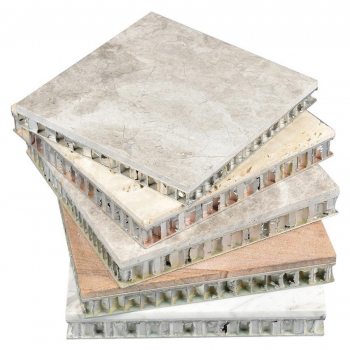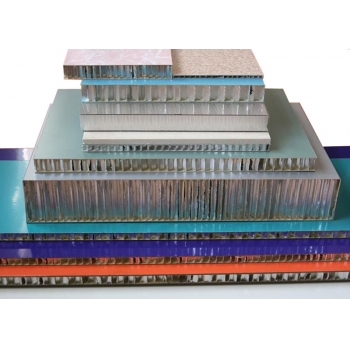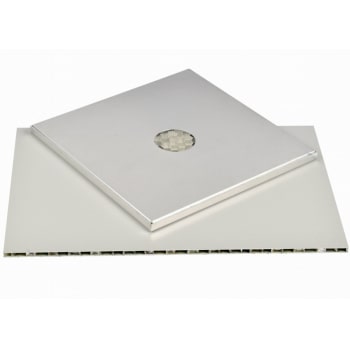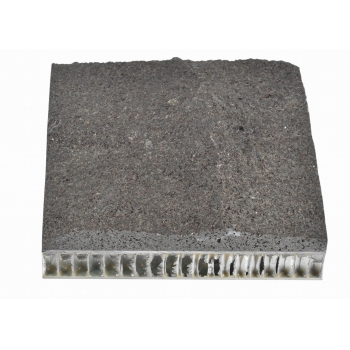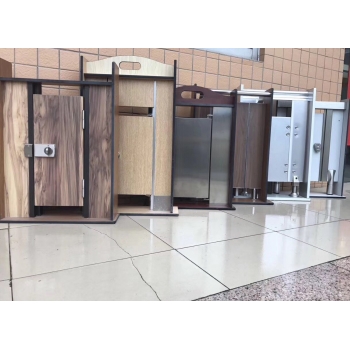
Honeycomb Panels

- Total 1 Page 7 Item(s)
Honeycomb panels are a type of composite material that consists of two thin outer layers and a honeycomb core in between. The outer layers can be made of various materials such as aluminum Honeycomb panels, steel Honeycomb panels, wood Honeycomb panels, and even plastic Honeycomb panels. The honeycomb core is usually made of paper, aluminum, or plastic.
Honeycomb panels are widely used in industries such as aerospace, automotive, marine, and construction due to their unique properties. They are lightweight, strong, and have excellent stiffness-to-weight ratio. Additionally, they have good thermal and acoustic insulation properties.
One of the key advantages of honeycomb panels is their weight. They are much lighter than solid materials, which makes them ideal for applications where weight is a critical factor. For example, in aerospace applications, reducing weight can lead to significant fuel savings and improved performance.
Another advantage of honeycomb panels is their strength. The honeycomb structure provides excellent strength and rigidity while using minimal material. This makes them ideal for applications where high strength and stiffness are required, such as in the construction of aircraft wings and fuselages.
Honeycomb panels also have excellent thermal insulation properties. The air pockets in the honeycomb core act as insulators, reducing heat transfer between the outer layers. This makes them ideal for use in applications where temperature control is important, such as in refrigerated trucks and containers.
In addition to their thermal insulation properties, honeycomb panels also offer excellent acoustic insulation. The air pockets in the honeycomb core act as sound absorbers, reducing noise levels in applications such as building walls and ceilings.
Honeycomb panels are also easy to work with and can be cut, drilled, and shaped to fit various applications. They can be used in a variety of industries, from aerospace to construction, and are suitable for both interior and exterior applications.
In conclusion, honeycomb panels are a versatile and unique composite material that offers many advantages over traditional materials. They are lightweight, strong, have excellent thermal and acoustic insulation properties, and are easy to work with. As technology advances, we can expect to see even more innovative uses for honeycomb panels in the future.
What is a Honeycomb Panel?
Typically 5 layers: Skin, adhesive, honeycomb core, adhesive, skin. Materials with high tensile and compression strength are best suited to being skins, i.e. aluminum, steel, fiberglass. Adhesive varies widely by application: high strength, high temp, low temp, etc.
Honeycomb Core: A variety of honeycomb cores are available per design requirements.

How Does a Honeycomb Panel Achieve Its Strength?
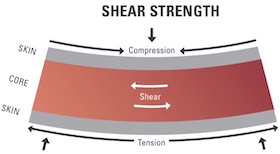
Honeycomb panel strength works much like an I-Beam, with the core being the vertical element and the facing being the flange, working together to create high shear strength. Like an I-beam, greater distance between skins (thicker core) will create greater strength.
- High strength skin reduces risk of tensile failure.
- Many cells reduce risk of buckling failure.
- Smaller cells reduce risk of climbing crush or peel failures.
- Core orientation and density can reduce shear failure.
Stiffer and Lighter than Single Sheet Laminate
The stiffness of Alucrown Honeycomb Panels allows the end user to utilize less material and reduce weight. Stiffness increases exponentially compared to single sheet material. The use of honeycomb core(s) creates a dramatic increase in stiffness with very little weight gain.
How is Stiffness Affected by Changing Core Thickness?

Relative Stiffness
As shown below, when all 3 structures have equal weight, height and material, honeycomb panel has a stiffness 264% higher.

Light, Strong, Tough, Cost-Effective
Alucrown Honeycomb Panels are a high-strength, lightweight material that provide efficient mechanical performance. Our lightweight panels are an excellent alternative to monolithic materials (e.g., solid aluminum, wood and steel) as well as panels with traditional core materials such as plywood, balsa, and foam.
Available in a wide range of sheet sizes and facings, our honeycomb panels are designed for ease of use in many common applications and processes. They can be engineered to meet specific requirements for strength and stiffness. Alucrown Honeycomb Panels are used
in many situations that require elevated core shear, compression and adhesion performance.
A World of Applications
Building Products
Alucrown Honeycomb Panels provide a flat, stiff, stable structure for use in building as a backing material to metal, glass, stone, and other decorative surfaces. Uses include wall cladding, ceilings, canopies, and elevator interiors.
Commercial
Alucrown Honeycomb Panels offer elevated mechanical properties; moisture, chemical and impact resistance; as well as vibration dampening. The result is improved performance in doors, platforms, fixtures, and custom furniture among others.
Ground Transportation
Alucrown Honeycomb Panels provide a lightweight solution for use in rail, automotive, truck, trailer, recreational vehicles, racing, and also military and specialty vehicles. Applications include walls, doors, floors, ramps, ceilings, bulkheads, seating, and shelves.
Marine & Recreation
Alucrown Honeycomb Panels offer a high strength-to-weight ratio that satisfies the demands of many applications. Sporting goods, boat decks, partitions, hatches, and doors are just a few examples.
Please refer to the Panel Design Questionnaire and contact us with your requirements.
Frequently Asked Questions
Honeycomb panels are a popular choice in the construction industry due to their lightweight, high strength, and durability. They are made up of a honeycomb core sandwiched between two thin layers of material, such as aluminum or fiberglass. Here are some frequently asked questions about honeycomb panels.
Q: What are the benefits of honeycomb panels?
Q: What materials are used to make honeycomb panels?
Q: What are the different types of honeycomb cores?
Q: What are the different types of honeycomb panel configurations?
Q: What is the maximum size of a honeycomb panel?
Q: What is the fire rating of honeycomb panels?
Q: How are honeycomb panels installed?
In conclusion, honeycomb panels offer several benefits over traditional solid panels, including lightweight, high strength, and durability. They can be made from a variety of materials and configured in several different ways to fit specific design requirements. The fire rating and installation method will depend on the specific material used and the application. If you have any further questions about honeycomb panels, please feel free to contact us
